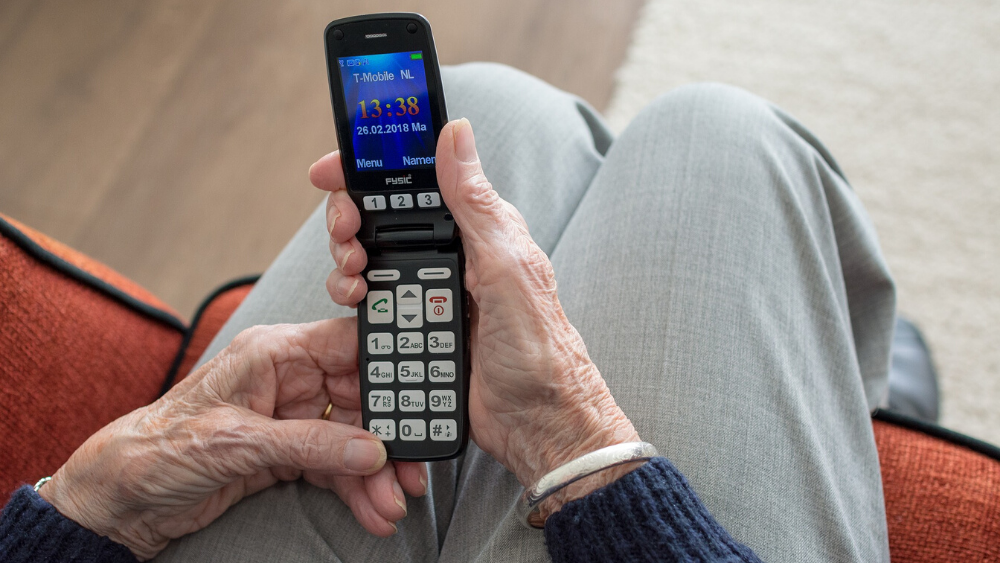Insights
INSIGHTS
All Topics
My Account
How charities are reaching out to tech-averse service users
29 May 2020by Paul Rubens
In this digital world, how can charities help service users who don’t have access to tech?
About one in ten adults in this country have no regular access to the internet, according to the Office for National Statistics. Some of these are elderly, but the group also includes people on low incomes such as refugees, young people in care, homeless people, and people with a variety of disabilities.
Many people in this group are likely to be potential users of services provided by a wide range of charities, but here’s the problem: charities are increasingly looking to digital to promote their services, and thanks to the Coronavirus pandemic many have been forced to use digital service delivery in place of more traditional face-to-face approaches. That means that those people without regular access to the internet, as well as the tech-averse, are in danger of being excluded.
The ONS also says that over 50% of "older" people do not use the internet for a variety of reasons: they may not be able to afford it, they may not be confident using new technology, or they may have age-related disabilities which make using technology hard.
Get technology into the hands of those that need it
One way to tackle the problem is for charities to take steps to provide technology to potential service users who can’t afford it or are prevented from accessing it.
For example, many teachers in low-income areas believe that a large proportion of their pupils do not have adequate access to technology for home learning during the Coronavirus crisis. Education charity Teach First is putting pressure on internet providers to offer free access to Wi-Fi hotspots, lift data caps, and install broadband into homes without it, and on technology companies to donate or offer free leasing of internet-enabled devices that pupils can use while schools are suspended.
Taking this a stage further, Mama Health and Poverty Partnership, a group of organizations supporting BAME African women and girls, is hoping to help those at risk of domestic violence by providing the means for potential service users to contact them. "We’re now trying to find funds to buy pay-as-you-go handsets with a bit of credit on them and hiding them in the food packages we’re dropping off so at least they have a way of calling someone if they are in trouble and need help," said the charity’s Rose Ssali.
Use older technology
When it comes to delivering services to older people, an obvious solution is to use technology that elderly service users are more likely to be familiar with.
That’s the thinking behind Age UK’s Silver Line helpline and friendship service for people aged over 55. It uses a plain old telephone line to allow older people to call at any time of the day or night. It is a simple and elegant solution which uses the right technology for an audience which may be tech-averse.
Keep technology simple
Many potential service users may not have an expensive smartphone, but they may have some form of mobile phone at their disposal.
Young person’s charity The Mix is taking advantage of this fact to offer a free crisis messaging service using nothing more complex than text messages. Under 25s can text THEMIX to 85258 at any time to be connected with a councillor who can hold a conversation with them and support them by exchanging text messages.
An advantage of this system is that these text messages are free to send on most UK networks, so anyone in need of help can use the service without using up their phone credit.
Homelessness charity Next Meal has taken this approach a stage further with its app for homeless people who do have access to a smartphone even if they may not be overly tech-savvy. The app uses the phone’s GPS to find its own location, and can direct users to the nearest soup kitchen at the touch of a single button.
Avoid the need for technology entirely
A simple way to accommodate tech-averse service users is to remove the need for them to encounter technology entirely. This can be sometimes be achieved by the clever use of technology on the charity’s part.
A simple example of this provided by AgeUK: it offers a service to make online food orders on behalf of people who have no access to the internet themselves.
Food charity GROWing Links’ Street Food Project is slightly more complex. When vulnerable people are referred to the project, the charity itself uses technology such as emails, texts and Google Docs to manage its requirements, and Facebook Messenger groups to coordinate the service delivery teams to ensure that food is delivered to the people who need it. But the service users themselves have no need for any contact with this technology at all.
Perhaps the most innovative example of this approach is provided by a group of charities and other organisations in Sweden to help homeless people who have no access to technology when temperatures get dangerously low.
The group partnered with digital billboard company Clear Channel to get messages across: when the temperature dips below freezing, directions to the nearest shelter are displayed on 53 strategically selected digital marketing billboards, helping homeless people find warmth.
07 Mar 2025by Ioan Marc Jones
A-Z incredible fundraising ideas for charity
07 Mar 2025by Ioan Marc Jones
An A-Z glossary of service delivery terms and definitions
Our Events
Charity Digital Academy
Our courses aim, in just three hours, to enhance soft skills and hard skills, boost your knowledge of finance and artificial intelligence, and supercharge your digital capabilities. Check out some of the incredible options by clicking here.

















